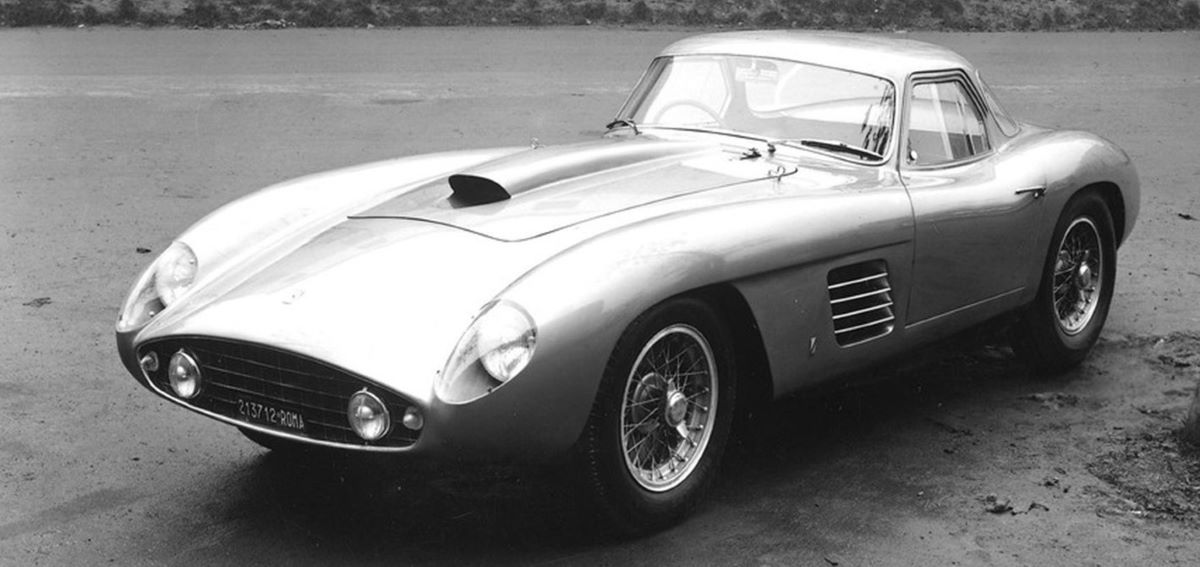
The Ferrari 375 MM, was a sports racing car produced by Ferrari from 1953 to 1955. It was named “375” for the unitary displacement of one cylinder in the 4.5 L V12 engine, and the “MM” stood for the Mille Miglia race. In total 26 units were made, including four converted from the 340 MM
The 375 Mille Miglia carried on the Ferrari tradition of naming sports models after the famous Italian road race and was a spin-off of the F1 single-seater, just like its sister car, the 375 America, which was the GT equivalent. The engine was based on its F1 counterpart, albeit with a new crankshaft giving a shorter, 68 mm stroke but with a bigger bore for a larger, 4.5-litre displacement. The engine debuted in a 340 berlinetta at Le Mans where it was driven by Ascari and Villoresi. Subsequently Pinin Farina built a series of around 10 spiders and a few berlinettas which were mainly fielded by privateers.
Engine
- Type front, longitudinal 60° V12
- Bore/stroke 84 x 68 mm
- Unitary displacement 376.84 cc
- Total displacement 4522.68 cc
- Compression ratio 9 : 1
- Maximum power 250 kW (340 hp) at 7000 rpm
- Power per litre 75 hp/l
- Valve actuation single overhead camshaft per bank, two valves per cylinder
- Fuel feed three Weber 40 IF/4C or 42 DCZ carburettors
- Ignition single spark plug per cylinder, two magnetos
- Lubrication wet sump
- Clutch multi-plate
Chassis
- Frame tubular steel
- Front suspension independent, unequal-length wishbones, transverse leaf spring, anti-roll bar, Houdaille hydraulic shock absorbers
- Rear suspension live axle, semi-elliptic springs, twin radius arms, twin Houdaille hydraulic shock absorbers
- Brakes drums
- Transmission 4-speed + reverse
- Steering worm and sector
- Fuel tank capacity 180 litres
- Front tyres 6.50 x 16
- Rear tyres 6.50 x 16
Bodywork
- Type two-seater berlinetta, spider
- Wheelbase 2600 mm
- Front track 1325 mm
- Rear track 1320 mm
- Weight 900 kg (dry)
Performance
- Top speed 289 km/h
1954 Ferrari 375 MM Spider
1954 Ferrari 375 MM Spider By Pinin Farina, Chassis No. 0362AM, designed purely for the rigors of endurance racing, the Ferrari 375 Mille Miglia also furthered Ferrari’s reputation for building superb dual purpose sports machines while establishing Pinin Farina as Ferrari’s coachbuilder of choice. The 375 MM first appeared at the 1953 24 Hours of Le Mans. Fundamentally it combined a 340 MM chassis with the 4.5 L/340 HP V-12 developed for the stillborn Indianapolis 500 project. Weighing in at just 2,000 pounds, the 375 MM in Berlinetta form set a lap record at the Sarthe that year before retiring. Later that same year another 375 MM took fourth place in Mexico’s Carrera Panamericana, sealing the first of Ferrari’s many Manufacturers World Championships. According to various sources, Pinin Farina built sixteen open coachwork 375 MM cars with serial numbers from 0360 AM to 0460 AM. The chassis frames were fabricated in small lots by Gilco Autotelai and sent to Ferrari to have the suspension, brakes, steering and mechanical units installed. The rolling and operational assembly was sent to Pinin Farina for the installation of the body, paint and finish work. This car was exported with chassis frame stamped 0362 AM, identification plate stamped Tipo 102, number 0362 AM, and chassis stamped with Gilco sequence number 10. Pinin Farina job number 12569 was stamped on the back of the dash panel and scratched on the underside of the windshield frame. The steering gearbox #144 listed on the original data sheets for the car remains in the car to this time. In April or May of 1954 it made its maiden run at El Mirage dry lake, where it hit a remarkable top speed of 172 MPH.

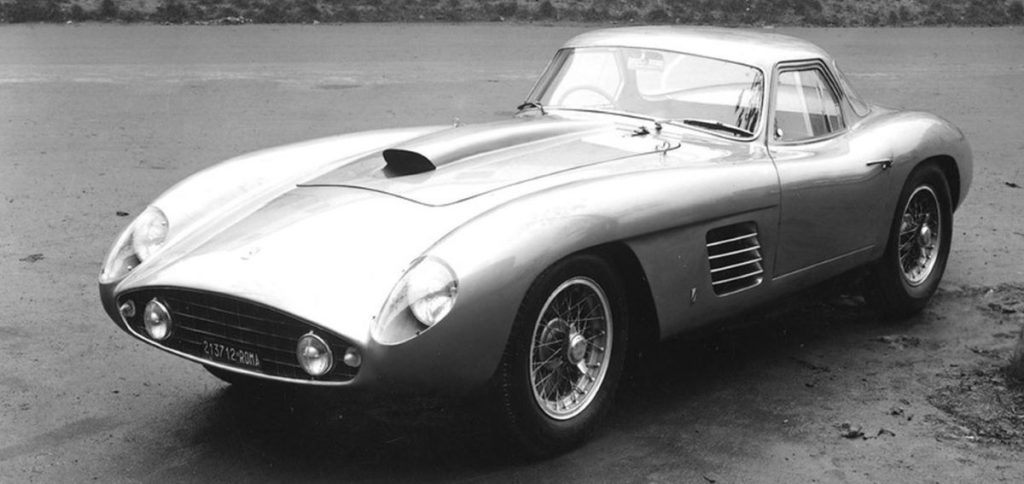
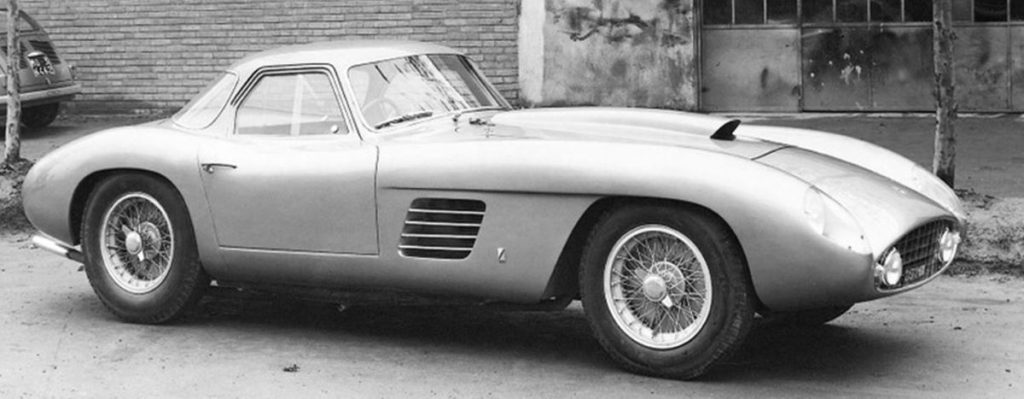
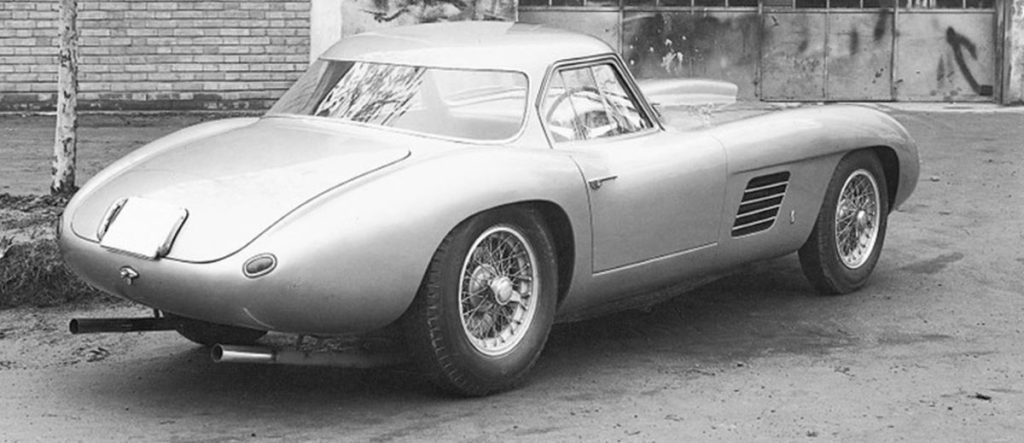

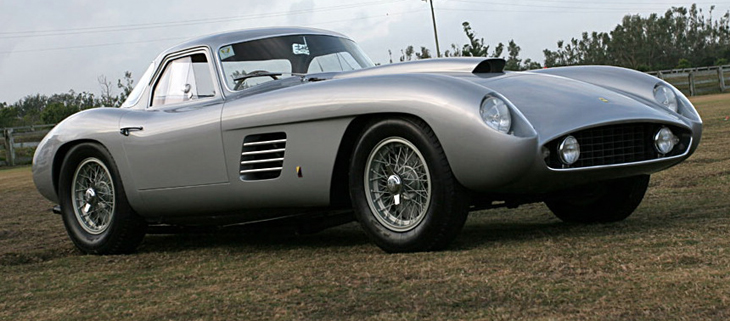
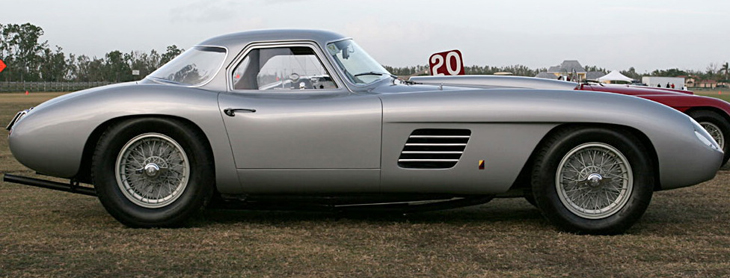
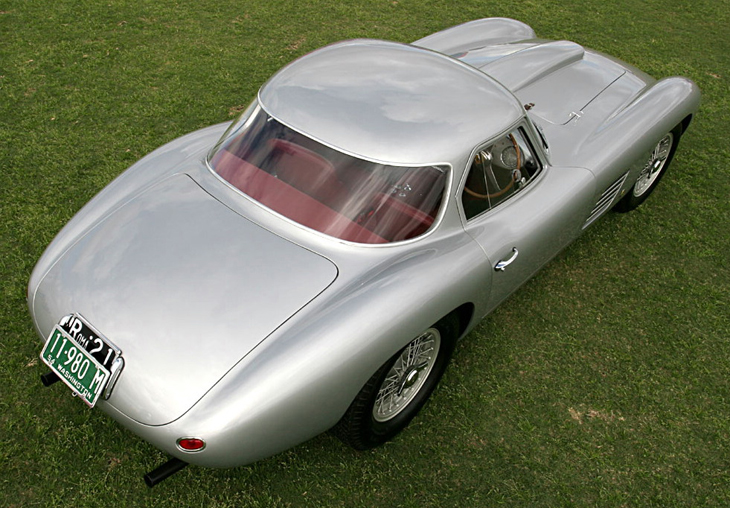

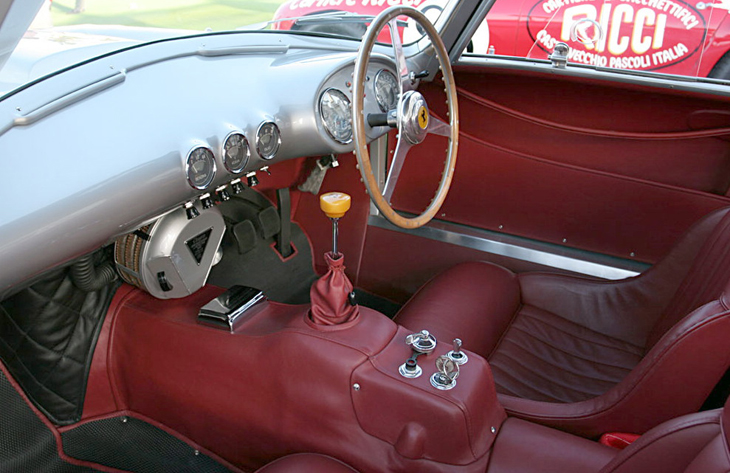
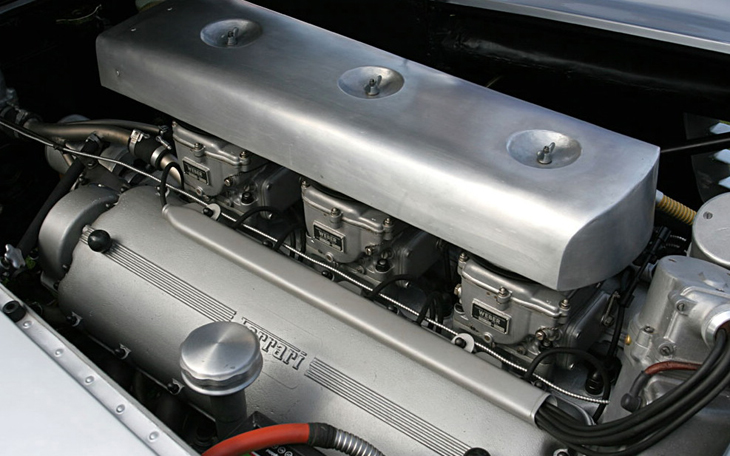

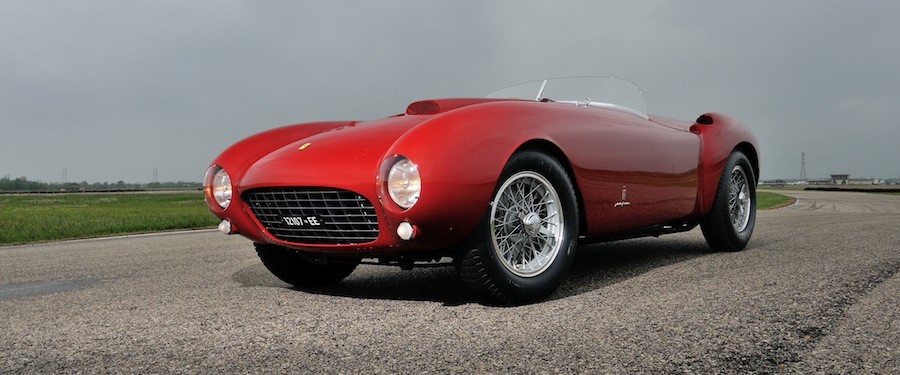
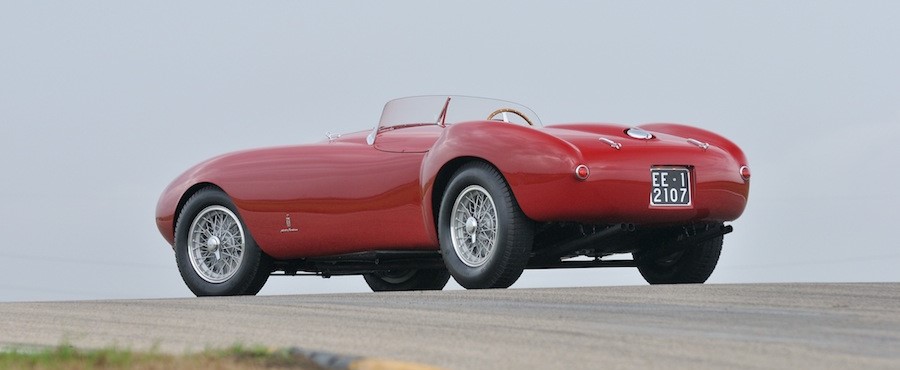
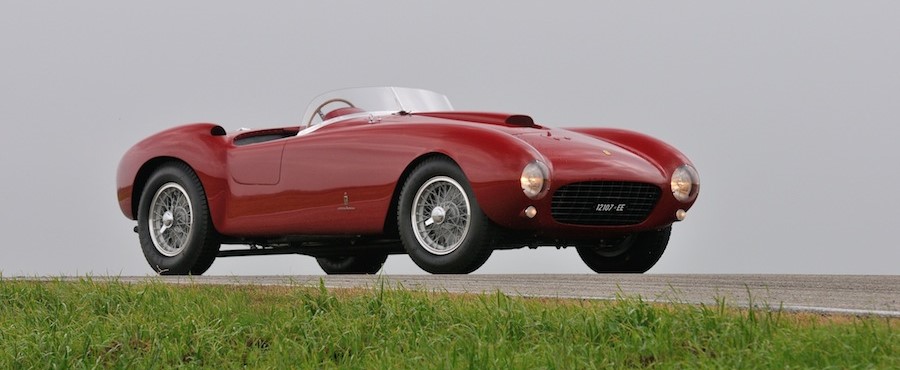
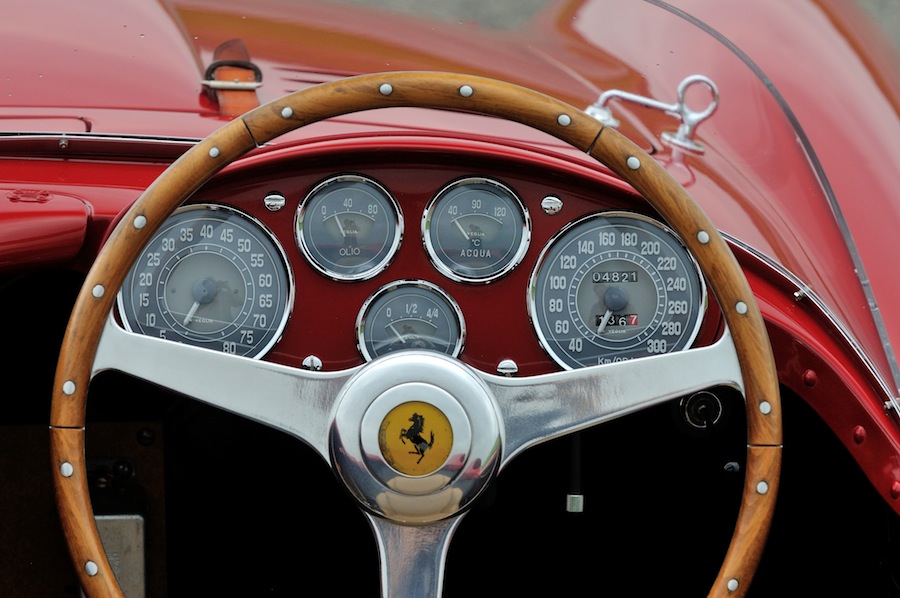
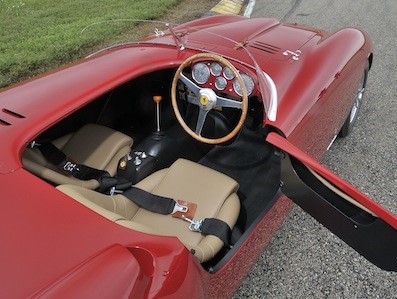
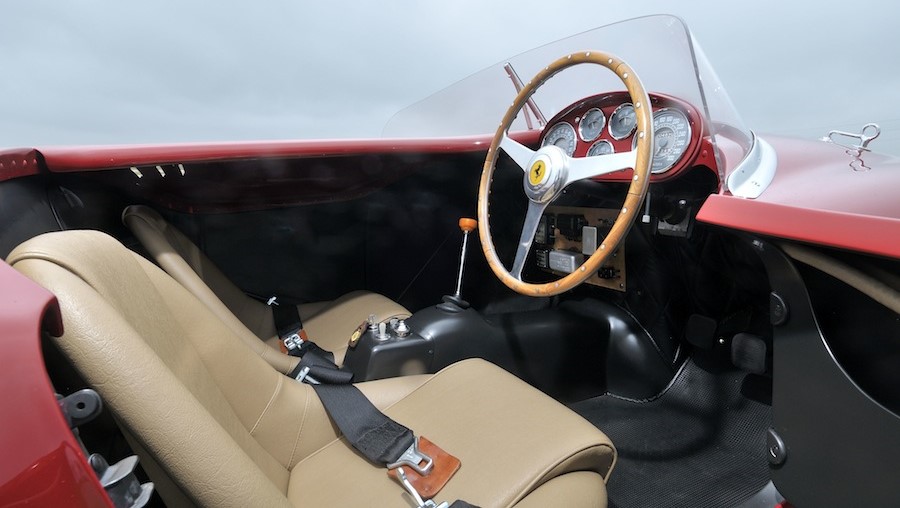
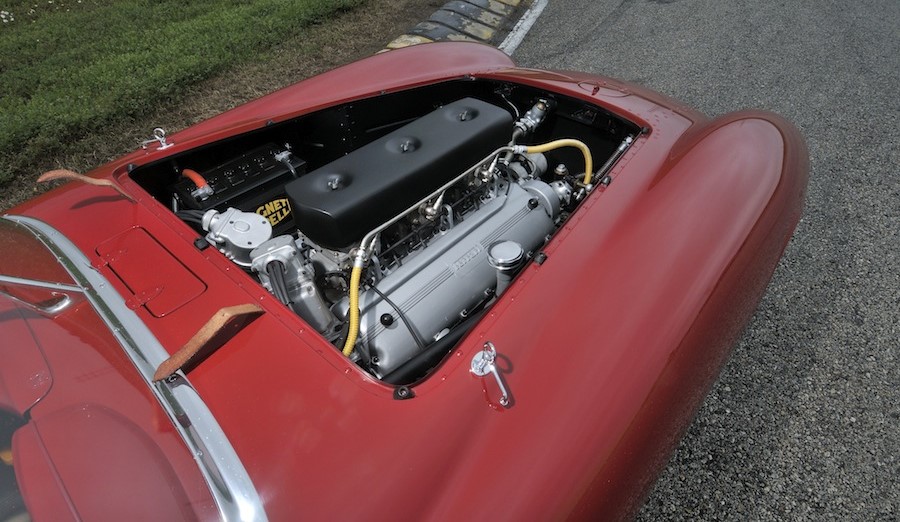
You must be logged in to post a comment.